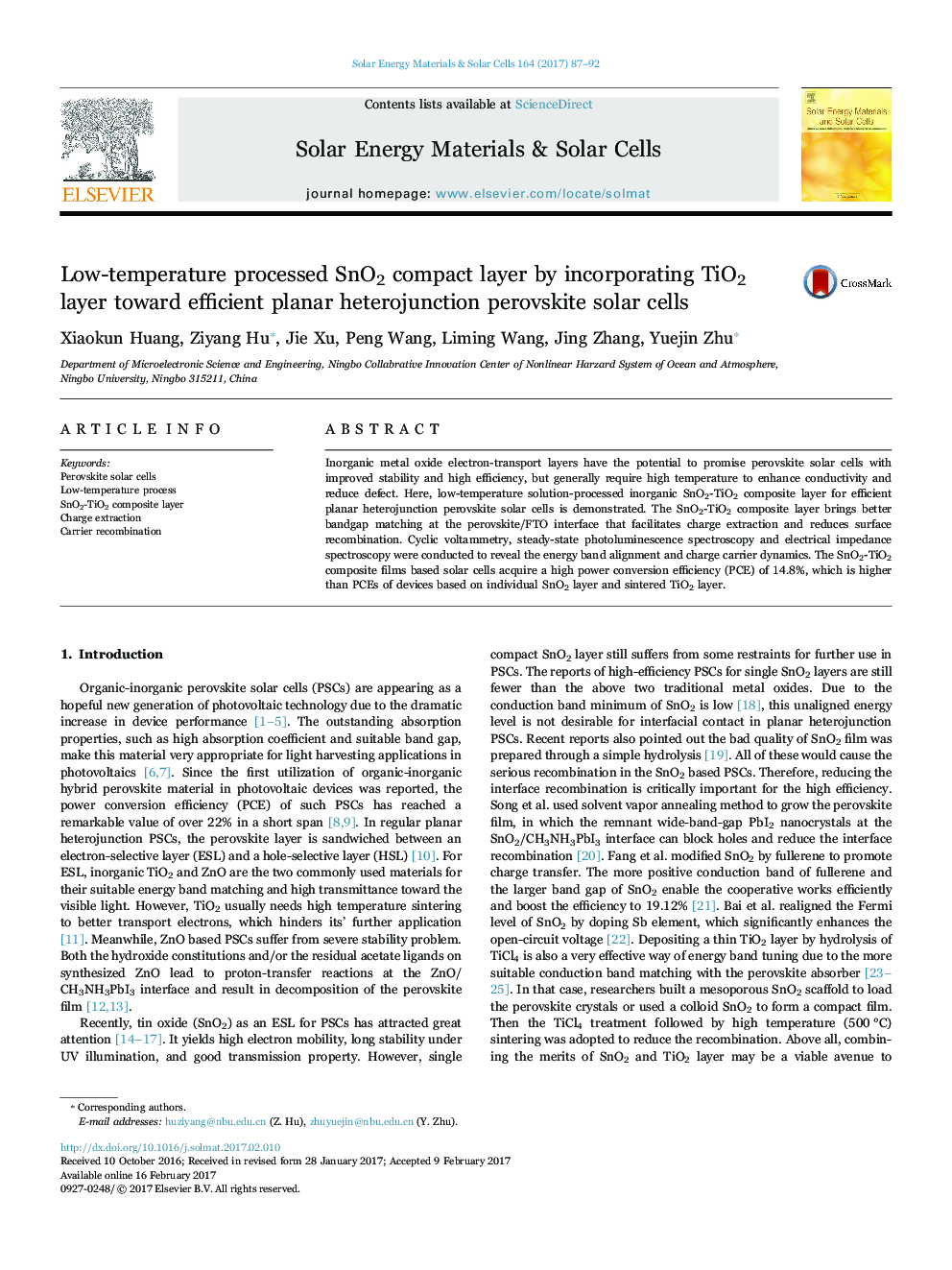| کد مقاله | کد نشریه | سال انتشار | مقاله انگلیسی | نسخه تمام متن |
|---|---|---|---|---|
| 6457104 | 1420659 | 2017 | 6 صفحه PDF | دانلود رایگان |

• The SnO2-TiO2 composite layers are low-temperature-processed.
• The composite layer for efficient perovskite solar cells was demonstrated.
• The composite layer improves the band-alignment and interface-contact.
• The composite layer facilitates charge extraction and reduces carrier recombination.
• The solar cell based on SnO2-TiO2 layer acquires an efficiency of 14.8%,
Inorganic metal oxide electron-transport layers have the potential to promise perovskite solar cells with improved stability and high efficiency, but generally require high temperature to enhance conductivity and reduce defect. Here, low-temperature solution-processed inorganic SnO2-TiO2 composite layer for efficient planar heterojunction perovskite solar cells is demonstrated. The SnO2-TiO2 composite layer brings better bandgap matching at the perovskite/FTO interface that facilitates charge extraction and reduces surface recombination. Cyclic voltammetry, steady-state photoluminescence spectroscopy and electrical impedance spectroscopy were conducted to reveal the energy band alignment and charge carrier dynamics. The SnO2-TiO2 composite films based solar cells acquire a high power conversion efficiency (PCE) of 14.8%, which is higher than PCEs of devices based on individual SnO2 layer and sintered TiO2 layer.
Low-temperature solution-processed inorganic SnO2-TiO2 composite layer brings perfect band-gap matching and closes interface-contact between perovskite layer and FTO substrate, which contributes to facilitating charge extraction and reducing carrier recombination, leading to device efficiency as high as 15%.Figure optionsDownload high-quality image (158 K)Download as PowerPoint slide
Journal: Solar Energy Materials and Solar Cells - Volume 164, May 2017, Pages 87–92